| HOME | Translate |
|
| HOME | Translate |
|
|
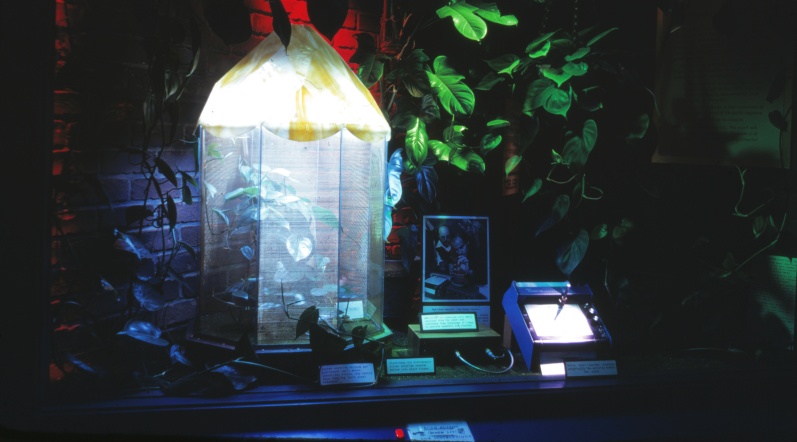
|
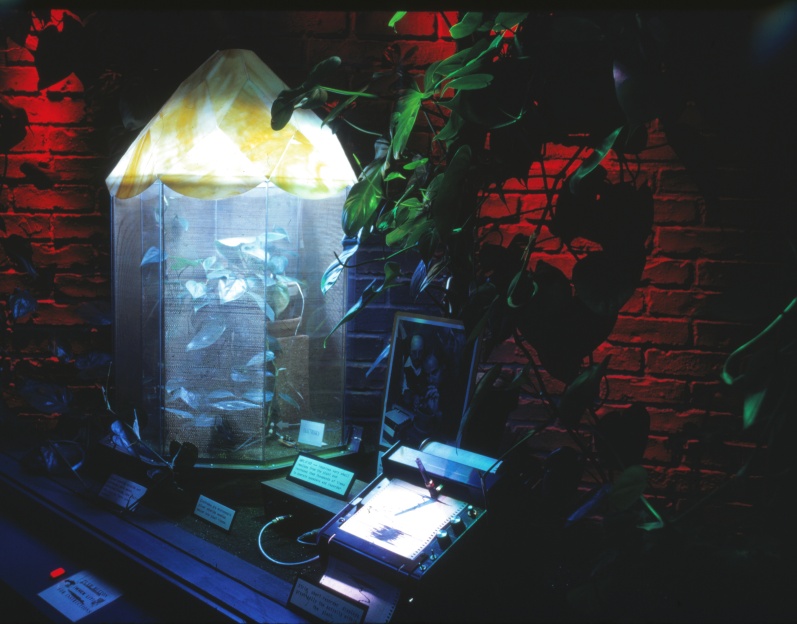
Museum
Employees Pose for Promotional Photos
with
the "Plant Sensitivity Display"
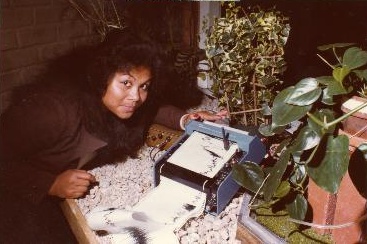
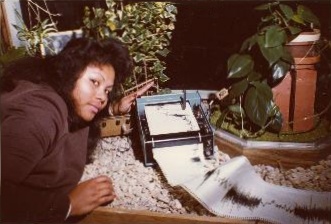
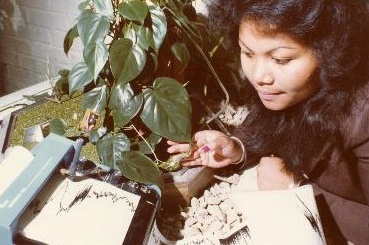
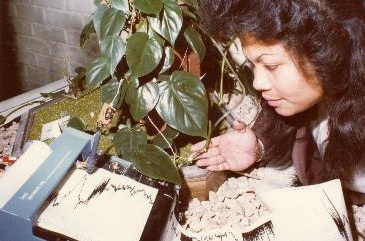
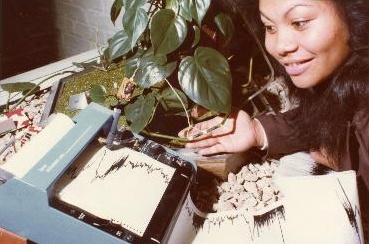
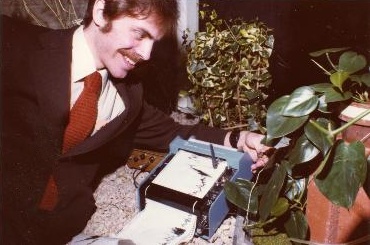
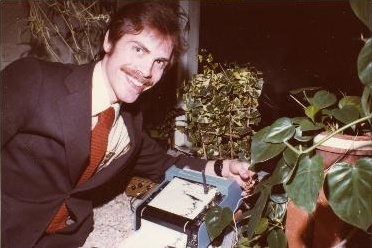
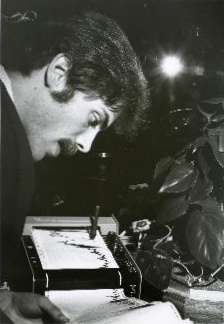 |
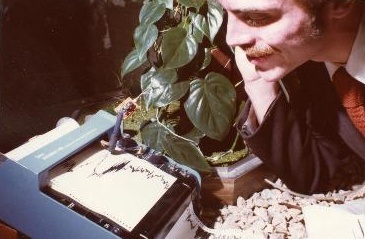 |
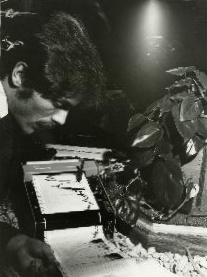 |
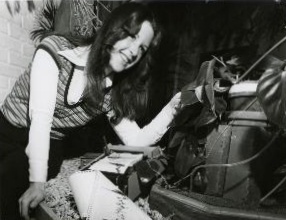
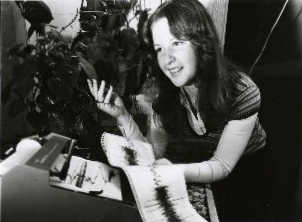
 |
Thanks to Ripley's for the photos |
Having
Fun at the Museum
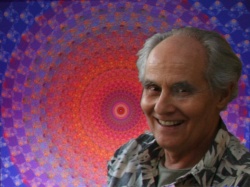 After
installing the plant exhibit, Randall
Fontes was thoroughly
fascinated watching visitors of all ages, interact with the plant.
Some visitors would send loving feelings to the plant. Others would threaten
the plant but many learned a new respect for simple life. After
installing the plant exhibit, Randall
Fontes was thoroughly
fascinated watching visitors of all ages, interact with the plant.
Some visitors would send loving feelings to the plant. Others would threaten
the plant but many learned a new respect for simple life.
Leonard Nimoy who played Star Trek's Spock did the promotional video that played in the museum lobby. Fun, food and hanging out with Scotty "Beam me up". |
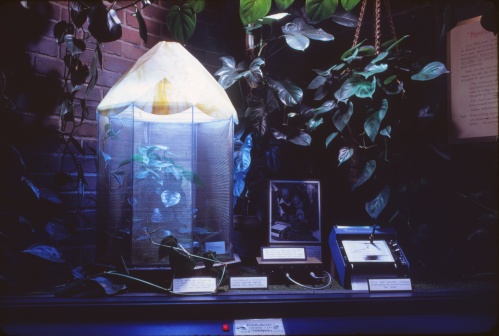
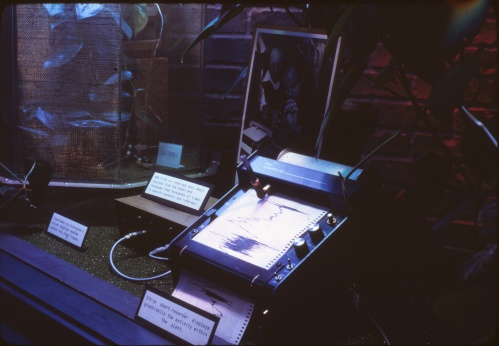
The
San Francisco and Bay Area Guide Week of Jan. 7 to Jan. 15,1977
Researchers
Bob Swanson and Randall Fontes
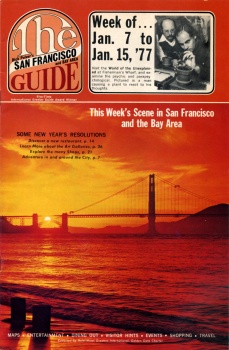
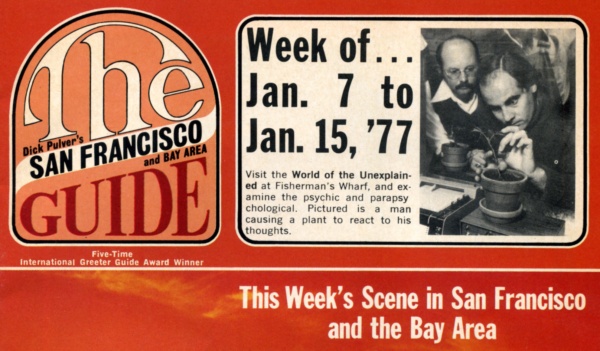

MONDAY, MARCH 28, 1977 By Ivan Sharpe “Psychic magazine calls them the world's leading plant sensitivity researchers. They have appeared in an NBC special and on TV talk shows. And they will be featured in a $1 million Hollywood documentary, "The Secret Life of Plants," that will be released in theaters this fall. |
| The Daily Review Friday,
August 5, 1977
Castro Valley men probe the secret life of plants By GLENNDA CHUI “For a conclusive experiment, Fontes and Swanson need to test a larger number of volunteers, and they're now looking for ways of financing their research. |
cigarette lighter. "Kill! Kill! You're going to die!" He continued to wave the lighter but with less and less enthusiasm. "What do you expect it to do - hide its eyes?" his wife chided him. "I always knew this plant communication
business was nonsense," he agreed, grinning a sheepishly. “Look at that
thing," he pointed at the plant, “it's hooked up to a lie detector.
At this point, parapsychologist Bob Swanson, who had been watching the scene with some interest, approached the couple. Introducing himself, he learned they were tourists who'd wandered into San Francisco's World of the Unexplained by chance. "We're here on vacation, "the man explained. We've had a good time, this is a great city - but I'll be glad to get back to Queens." “Queens, New York? It's a nice place. I was there once," Swanson said. "You were! Wow, hon, did you hear that? He's been to Queens!" Suddenly the needle attached to the plant began to move wildly, making a pronounced up and down pattern on the graph paper. Noting the reaction, Swanson continued casually, "One thing I really enjoyed about Queens was a little restaurant that specialized in borscht." “Borscht! Jesus Christ! Do you like borscht? You can't get a good bowl of borscht in this town. They just don't know how to make it out here." By this time the agitation recorded by the plant had become so great that the needle had literally skipped off the graph paper. “Hey! This plant stuff's for real!"
the tourist exclaimed as he and his wife moved closer to the display. Once
again the plant was reacting to his enthusiasm. “But why didn't it work
before?"
Two new believers had plenty to tell the folks back in Queens, but for Swanson the event was anything but surprising. Bob Swanson and his associate, Randall Fontes, hooked up their plant - a three dollar philodendron - by attaching electrodes to its stem nearly a year ago. In that time Charles Thielen, museum manager, estimates that some 165,000 visitors have gotten a response from the plant. "What's the big deal?" Fontes asks. "Naturally the plant responds to emotions. It's a live, growing entity." But it's this very susceptibility that can present unexpected barriers to scientific investigation, it seems. Fontes warns, "One must always take into consideration the effect of the experimenter on the plant. Of course believers get good results. Why wouldn't they? Their vibes have to be higher than a nonbeliever's. I know I could increase the results of my own experience by meditation, but what would that prove if another researcher couldn't come along and replicate them? As far as I'm concerned, if an experiment can't be duplicated by someone else it's useless. "One can pretty well count on getting exciting results with a psychic healer, say, but what really counts is getting some significant responses working with a skeptical scientist." The two psychic investigators, psychology instructors at De Anza College in Cupertino, have been involved in plant research for the past six years. "You name it - we've electroded it," Fontes says, “creeping charlies, wandering jews, piggy backs - mimosa pudica works best for us." Using the responsive mimosa pudica, the two have done some definitive experiments at a research laboratory on the Peninsula. Their results will be shown in the forthcoming movie, The Secret Life of Plants. Fontes explains, "Eleven subjects were shown a series of slides ranging from gentle, fluttering snowflakes to gorgeous, nude girls to violent, gory deaths. The plants were in the same room, but separated from the individual in every way possible - scent, physical vibrations, air, moisture. There was no visual connection between the subject and the plant and I might as well add - silly as it seems the plant couldn't see the slides. The emotions of both plant and human were recorded by a galvanic skin response meter. Almost invariably the two responses - plant and human matched. In other words, the plant was reacting to the emotions of the human subject. Can you imagine the odds of this occurring by chance? Two thousand to one!" The man who literally led Fontes and Swanson down the garden path to science is Marcel Vogel, a senior research chemist at International Business Machines (IBM) in Los Gatos. Before beginning their early experiments at California State University at Hayward, the two were tutored in technique by the older man, who later lent them much of his sophisticated equipment. During the mid-l 960s, Vogel shocked the scientific world by stating unequivocally that man can and does communicate directly with plant life How does it work? Vogel, who refers to his after hours plant experiments as "subjective science," explains it this way. To establish a link between man and plant, an initial charge of thought energy must be released to the plant by the experimenter. This serves to isolate the plant from such secondary influences as light, temperature and electrical charges in the room. Vogel's tests have demonstrated that the thought energy charging can be accomplished in the same room or at remote locations thousands of miles apart. Unfortunately, Vogel's experiments cannot always be duplicated. Though plants adore him, scientific colleagues are often skeptical. Aware of, but apparently unconcerned by the controversy, Vogel merely smiles benignly. "I meditate a lot," he explains. "My guru is a split leaf philodendron." For those - scientists or otherwise who wish to do their own research, Vogel suggests that green, broad-leaved house plants are the best responders: split leaf philodendron, ivy philodendron and/or dieffenbachia. The plant should be placed in the experimental environment for at least a week prior to the research project - just' to get used to the atmosphere. Vogel believes that, plants have personality if not intelligence. "Some obviously like one another," he insists. “You can tell, they'll grow together and intertwine. Others will grow apart. This is true with plant and human as well. Some are simply not compatible. Though rooted, a plant still has some choice. If it likes a human, it thrives, if not it dies." Despite his fondness for plants, Vogel is "anything but sentimental. "I have no reluctance to prune or discard plants," he admits. "Nature does this all the time. Naturally if you prune with hate or disinterest the plant feels this and responds negatively. When I prune a plant I always touch the cut end with my finger. They respond to touch, you know. Why not? Everything responds to love!" This same love power came naturally to Luther Burbank, an idol of Vogel's. Called the "wizard of horticulture," the pioneer plant grafter was an even greater source of confusion and controversy in his day. It seems that Burbank's experiments couldn't be duplicated either. And, like Vogel, he had some difficulty explaining his phenomenal results to ordinary mortals. First there was the "Burbank" potato, which, after one hundred years, continues to dominate the U.S. potato market. From there, Burbank went on to devise hundreds of improved variations on tomatoes, corn, squash, cherries, berries, flowers and fruits. Some, such as the shasta daisy, were completely new creations. "The secret of improved plant breeding, apart from scientific knowledge, is love," Burbank once said. "While conducting experiments to make the spineless cacti, I often talked to the plants to create a vibration. 'You have nothing to fear,' I would tell them. 'You don't need your defensive thorns, I will protect' you.' Gradually the thornless variety of cactus emerged. " As with Vogel, Burbank's green magic began with the personalization of his plants. But also like the contemporary scientist, he tempered his mysticism with practicality. Burbank saw nothing wrong with destroying 10,000 plants that didn't show the promise he was looking for and saving only the one that did. Small wonder that Burbank was called a "wizard." The 1906 earthquake that leveled much of Santa Rosa left the botanist's greenhouses totally intact. Not so much as a pane of glass was cracked, yet his nearby cottage was split in half. Add to this the fact that five hundred glass negative plates showing Burbank's plants were the only survivors when a Santa Rosa photographic studio collapsed completely. Following the disaster, each plate was uncovered unharmed from the rubble. Some called it magic, others luck. A potential successor to Burbank is John de Simas, who has taken a rocky, worn-out cow pasture in Portola Valley and turned it into a wonder garden. Does de Simas talk to his plants? "I swear a little," he grins. "Sometimes I wonder if the energy flowing between us isn't' more negative than positive. But that just adds to the challenge. Anybody can grow a good crop if their energy is positive!" Despite his laconic, cowboy-like manner, de Simas's ideas border on the occult. He believes that every person who enters the garden has his or her own energy to offer and that this vibration interacts in some way with the energy of the plants. The more people' involved, the higher that energy becomes and the better the plants. But that's 'not all- astrological signs also have a part to play; not only the individual signs of the gardeners but the phases of the planets as each, vegetable or fruit is planted. John de Simas gardens by moon cycles and maintains that each planet has a very definite effect upon the growth of his garden. "Capricorn is a root sign," he explains. "I try always to plant my garlic and onions under the Capricorn sign. It's good for pruning too. Cancer has a good effect upon the squash family - cucumbers, melons, anything that grows on a vine will respond to Cancer." Yet de Simas admits that planets are not always to be relied upon. "Scorpio's a water sign," he points out. "It's supposed to be as good as Cancer for growing things. Maybe it is, but I haven't had much luck with it. Perhaps my energy is interfering in some way - that's why I, need lots of help in the garden. A garden - especially during a drought - needs all the "energy it can get." Consulting his moon sign almanac, de Simas predicts that August 20 will be an ideal day for planting lettuce from seed. "Virgo's an excellent aspect for lettuce," he explains. “December 23 and 24 - the last day of Sagittarius and the first day of Capricorn should be good for red onions." Because the moon signs indicate two more drought years, de Simas has become involved in pyramid gardening, another theory that sounds mystical but appears to have a very practical potential. De Simas grows all his plants in raised, pyramid-shaped beds which run north and south - just like the pyramids in Egypt. He also uses the pyramid shape - in this case inverted drinking cups partially submerged in the soil next to his string beans - as a means of drawing moisture to the roots and the plants. -He believes this form of pyramid power has caused the plants to thrive - despite perverse weather. "We need to do a lot of work before we can make any dramatic claims, but the possibilities for dry gardening are obvious," he says. Another innovation is a small plastic sheet of pyramid shaped indentations which is placed under the water used to irrigate the garden. "I've got all kinds of seeds in that water - peas, corn, sunflower, etc. The pyramids cause the seeds to germinate which adds energy to the water-seed condiments," de Simas explains. "There's really nothing mysterious about the pyramid. It's just a shape that collects energy, like an antenna. The plant is a collector, too, and it becomes the energy that it collects." De Simas intersperses his vegetables with flowers, which make for a very colorful garden - and that's the whole idea. "Color is energy," he says. "The marigolds aren't so many pretty faces, they're actually charging up the vegetables. Besides that, they have a decidedly discouraging effect on beetles and weevils." Whether it's people power, pyramid power, planet power, flower power or a combination of all of them - something's going right in the de Simas garden. Plants grown there have been judged by an independent laboratory to be twice as nutritious as the products of the average commercial garden. In Japan where garlic is used as a cure for cancer and tuberculosis, the herb is of primary importance. In October, Dr. Satosi Kitahara of Wakunaga Pharmaceutical Co. Ltd., in Hiroshima tested the sulphur content of garlic from de Simas's garden along with seven other samples. The Portola Valley offering was by far the highest in this essential nutrient. The sulphur from ordinary supermarket garlic measured 6.50. The de Simas product tested out at 12.44. De Simas is pleased by the results but not overwhelmed. "This is only the beginning," he says. "Our garden is just a year old. Everything's been against us - bad - soil, no rain, a cool spring. We've hardly begun to show what we can do." But the garden products don't just look and taste good - they do good as well. The land was donated by Dr. Carlo Besio and the project funded as a cooperative' venture by churches in Menlo Park, East Palo Alto and Palo Alto, coordinated by members of the Valley United Presbyterian Church in Portola Valley. Vegetables from the garden go to the Ecumenical Hunger Project which provides food for two hot lunch programs for senior citizens and the Food Closet Coalition. It's the energy - the interaction between people and plants - that makes the whole thing work," de Simas believes. "I didn't need those Japanese scientists to tell me our stuff was good. The proof is in the tasting. "I'm a lot different from those scientists wiring up their plants. They believe a thing isn't until they've proved it is. I believe that it is' until it's been proved that it isn't. And 'isn't' isn't about to happen around here." |
| The "National Enquirer" article is a bit hyped but fairly accurate. |
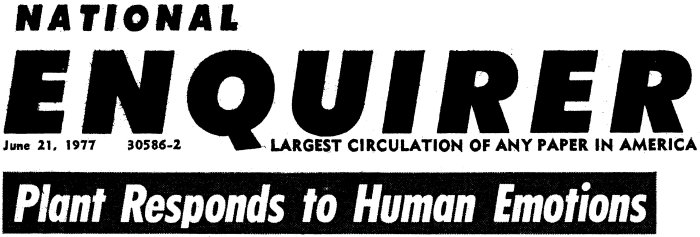
The $3 philodendron is hooked up to sensing devices and a chart recorder which monitor electrical energy within the plant at Ripley's World of the Unexplained in San Francisco. When a museum visitor expresses a strong emotion such as anger near the plant, a needle on the chart recorder leaps as the visitor calms down, the needle gradually drops. “A plant has developed a nervous system that acts like an antenna to pick up psychic energy that is directed towards it," explained Randall Fontes, co-developer of the exhibit. This was dramatically illustrated when William Enos, a milk distributor from Livermore, Calif., was standing in front of the exhibit "and some rowdy people came by and pushed me," Enos said. "I became very irritated and the plant responded!" "The needle on the chart jumped way up and showed steep peaks. I was amazed. Then I tried to think calm thoughts. The needle on the chart dropped and showed much smaller waves." Another visitor, Douglas Franz, a clinical psychology researcher from Dublin, Calif., had just exchanged heated words with someone. "My anger was still present when I entered the museum and directed my emotions to the plant. Suddenly the plant reacted- the needle on the chart shot way up," he recalled. "Finally, when I calmed myself down, the plant calmed down, too. The needle on the graph settled into an even line." In fact, museum director Charles Thielen said some 165,000 visitors have gotten a response from the plant. The plant was installed at the museum after earlier experiments by Fontes and Robert Swanson, both psychology instructors at De Anza College in Cupertino, Calif. In a crucial test, Fontes said, the plant accurately reflected the emotions of 11 people as they were shown slides that triggered strong feelings. Describing Fontes and Swanson as "very
solid researchers," Dr. David Van Nuys, professor of psychology and parapsychology
at California State College in Sonoma, declared: "They have shown that
plants do seem to be able to respond, to human emotions."
|
|
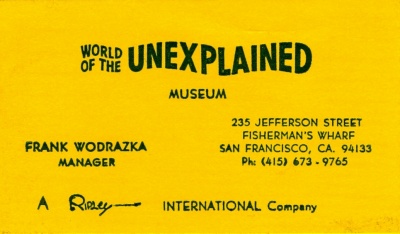
 |
Ripley's "Believe it or Not" |
More
Fun with Science and Plants
HOUDINI
SEANCE - Did Plant Respond?
The Plant and Human Consciousness Research at SRI
| R.Fontes@comcast.net | |
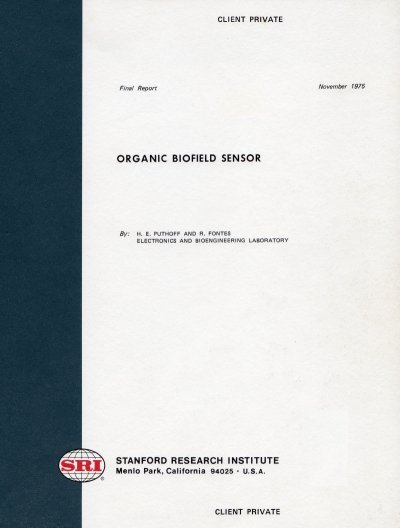
|
By: H. E. Puthoff and R. Fontes Electronics and Bioengineering Laboratory S.R.I Project 3194 (Task 3) November 1975 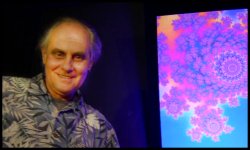
Randall Fontes, M.A. worked with the twice nominated physicist for the Nobel Prize Dr. Harold E. Puthoff and Russell Targ at Stanford Research Institute (SRI International): CIA-Initiated
U.S. Government
|

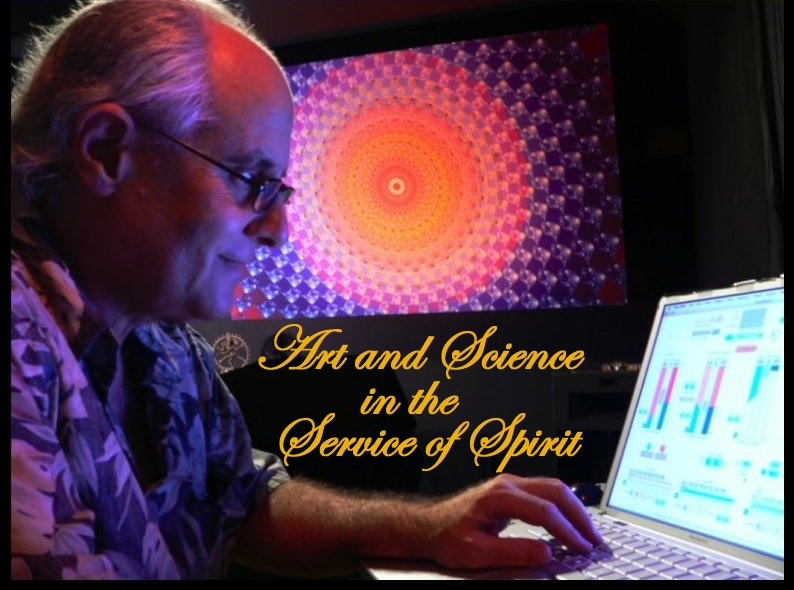
|